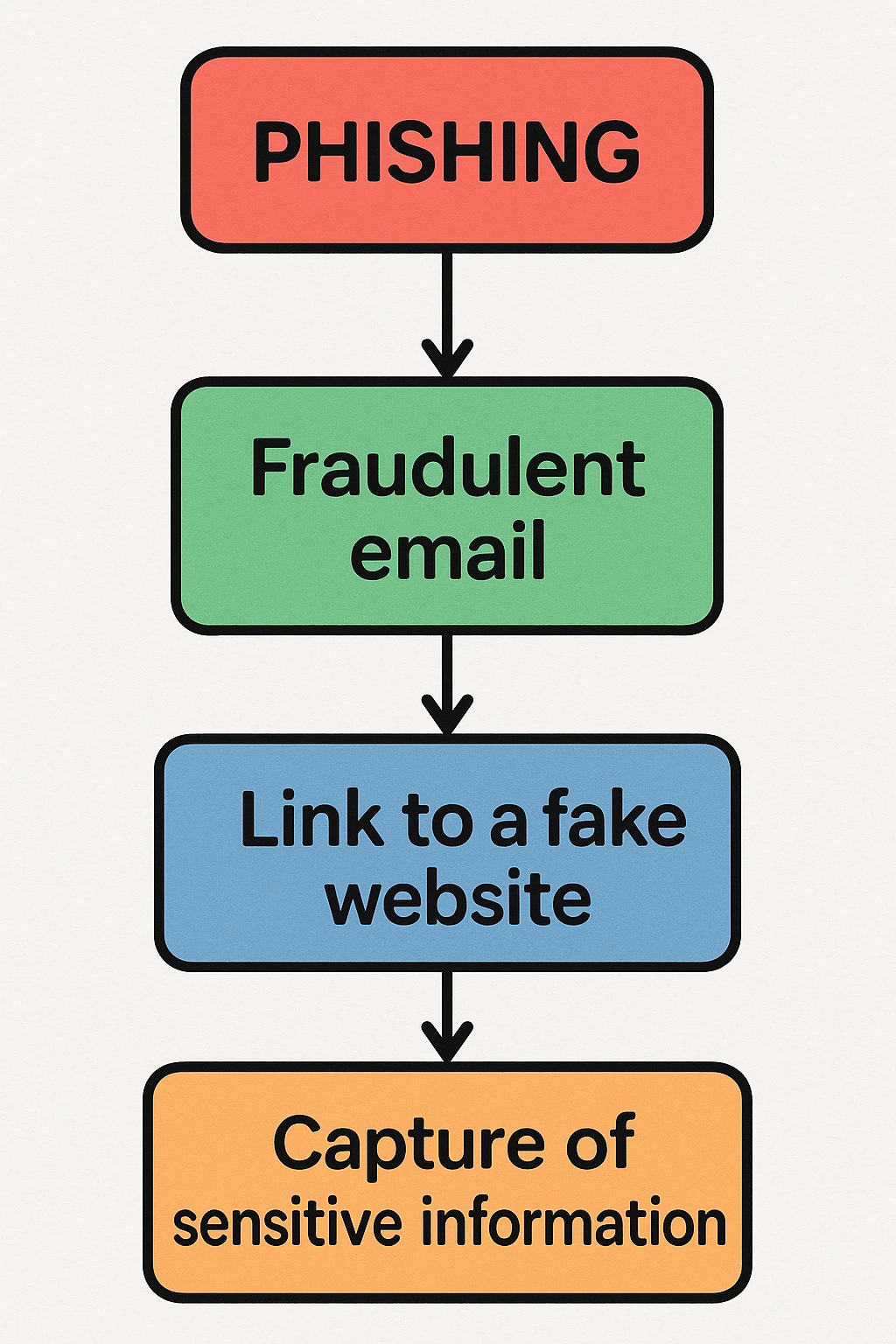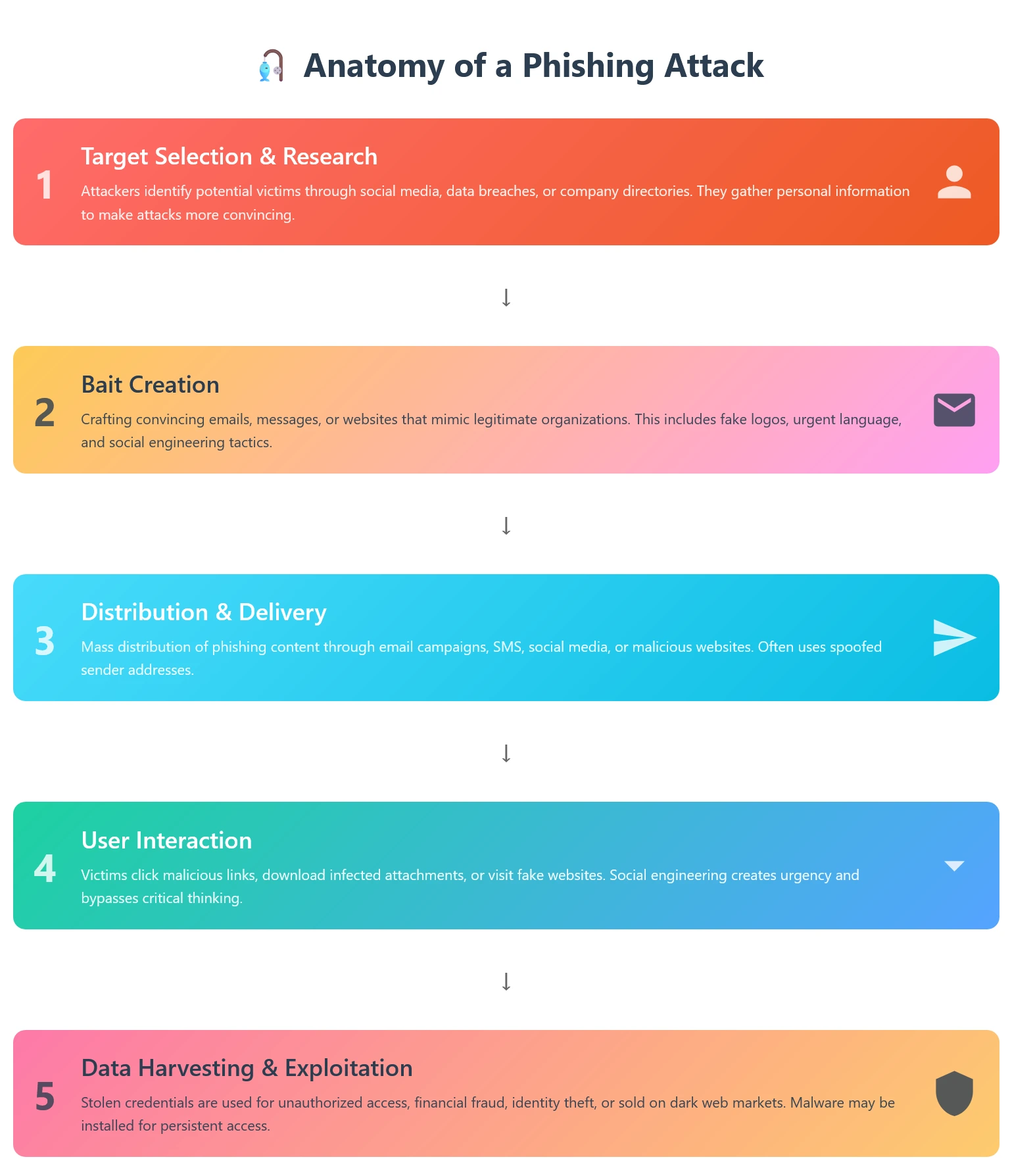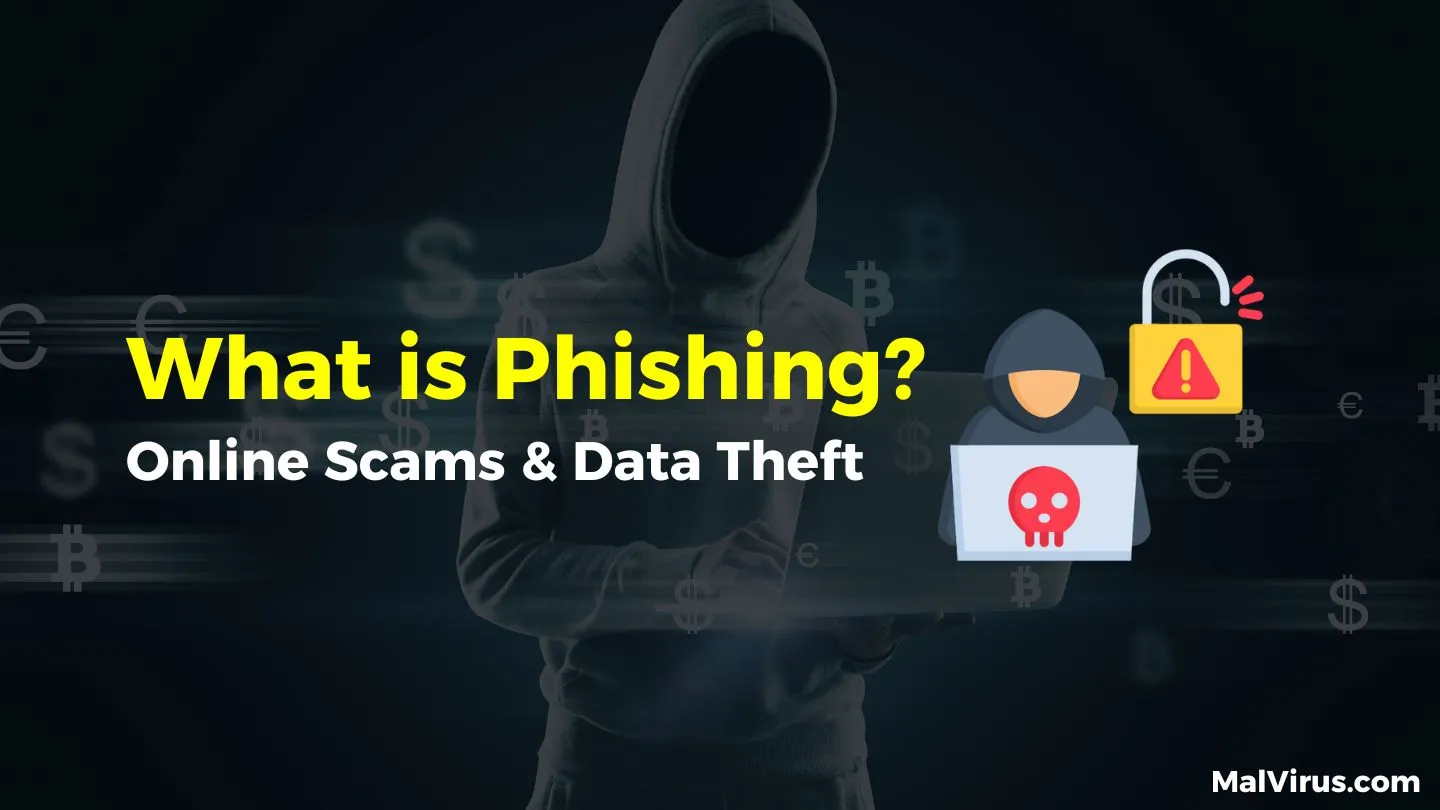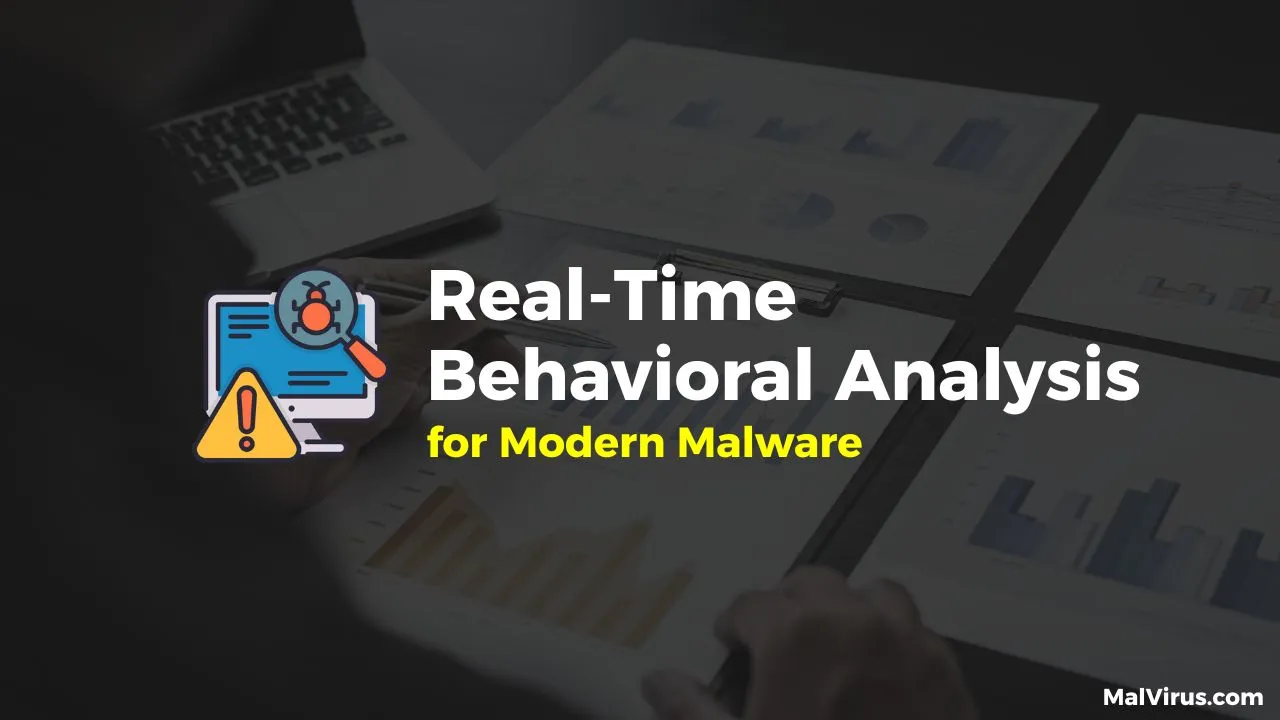What Is Phishing? Essential Protection Against Online Scams & Data Theft
Back in college, there was a sudden buzz, several students started complaining that their Facebook accounts had been hacked. At first, I assumed it was part of a larger breach, maybe something affecting users nationwide. But soon, it became clear, the attacks were only targeting students from our college.
One day, I received a suspicious email myself. The layout looked a little off from what Facebook usually sends. I dug deeper, checked the email headers, and there it was, the sender’s address wasn’t from Facebook at all. My instincts kicked in. Being into cybersecurity, I always double-check links before clicking. Curiosity led me to investigate further, and I discovered it was a phishing attempt, disguised as a friend request from our own placement director. The attacker was cleverly impersonating a trusted face to trick us into giving away login credentials.
That incident became a turning point for me. It wasn’t just a learning moment, but also a real-life reminder of how social engineering and phishing can hit closer to home than we think.

What Exactly is Phishing?
Phishing is a type of cyber attack where criminals impersonate trusted organizations or individuals to trick people into revealing sensitive information. The name comes from “fishing” just like anglers use bait to catch fish, cybercriminals use fake messages to “catch” unsuspecting victims.
Think of phishing as digital fraud dressed up in familiar clothing. Attackers create convincing replicas of legitimate communications to steal:
- Passwords and usernames
- Credit card numbers
- Social Security numbers
- Bank account details
- Personal identification information
How Does Phishing Work?
Here’s a typical phishing journey:
- The Hook – An email, text, or message is sent, usually containing urgency or fear (e.g., “Your account will be suspended!”)
- The Fake Link – It contains a link to a fake website that looks real.
- The Catch – You enter your info, and it gets sent to the attacker.
- The Damage – Your identity, money, or access is compromised.

Types of Phishing Attacks
-
Email Phishing: The Classic Approach
- How It Works: Criminals send mass emails pretending to be legitimate companies.
- Common Examples:
- Fake bank security alerts
- Fraudulent shopping confirmations
- Bogus tax refund notifications
- False account suspension warnings
- Red Flags to Watch For:
- Generic greetings
- Urgent action required
- Suspicious links
- Poor formatting
- Unexpected attachments
-
Spear Phishing: The Targeted Strike
- What Makes It Different: Unlike mass email phishing, spear phishing targets specific individuals or organizations.
- The Research Phase: Attackers study their targets by:
- Reviewing social media profiles
- Researching company websites
- Finding news articles about the target
- Collecting information from data breaches
- Why It’s More Dangerous:
- Highly personalized content
- References to real people and events
- Appears to come from trusted sources
- Much higher success rate
-
Whaling: Going After the Big Fish
- Target Audience: Senior executives, CEOs, and high-profile individuals
- Common Tactics:
- Fake legal subpoenas
- Fraudulent merger and acquisition documents
- Bogus regulatory compliance requests
- False board meeting notifications
- Why Executives Are Targeted:
- Access to sensitive company information
- Authority to approve large financial transactions
- Busy schedules that lead to quick decisions
- High-value targets for criminals

-
Smishing: Phishing via Text Messages
- The Mobile Threat: With billions of text messages sent daily, SMS has become a popular phishing channel.
- Common Smishing Examples:
- Fake delivery notifications
- Fraudulent bank alerts
- Bogus contest winnings
- False account verification requests
- Why Smishing Works:
- People trust text messages more than emails
- Mobile screens make it harder to spot fake URLs
- Immediate response expected
- Less sophisticated security filtering
-
Vishing: Voice-Based Phishing
- The Human Touch: Criminals use phone calls to manipulate victims directly.
- Common Vishing Scenarios:
- Fake tech support calls
- Fraudulent IRS representatives
- Bogus bank security departments
- False insurance claims
- Vishing Tactics:
- Creating sense of urgency
- Using official-sounding language
- Claiming to prevent account closure
- Requesting immediate verification
-
Pharming: Redirecting Web Traffic
- How It Works: Instead of tricking users to click malicious links, pharming redirects legitimate website traffic to fake sites.
- Technical Methods:
- DNS poisoning
- Router hijacking
- Malware installation
- BGP hijacking
- Why It’s Particularly Dangerous:
- Users type correct URLs but reach fake sites
- Difficult for average users to detect
- Can affect many users simultaneously
- Bypasses many security awareness measures
Signs of a Phishing Email
- Urgency or Threats: “Your account will be deactivated in 24 hours!”
- Suspicious Links: Hover over the link and if the URL looks strange, don’t click.
- Impersonation of Legit Brands: Logos and names may look real, but inspect the sender’s email address.
- Spelling & Grammar Errors: Professional companies rarely make such mistakes.
- Too Personal or Too Generic: “Dear User” or an overly specific greeting can be red flags.
How to Protect Yourself From Phishing
- Think Before You Click
Don’t blindly trust links or attachments, especially in unsolicited emails. - Verify the Source
If you’re unsure, call the company directly using official contact details. - Check the URL
Always make sure the website is secure (https://) and the domain name is correct. - Use Multi-Factor Authentication (MFA)
Even if someone steals your password, they’ll still need a second verification step. - Keep Your Software Updated
Browsers, antivirus tools, and operating systems often release security patches to fight phishing. - Educate Yourself and Others
Awareness is your best weapon. Attend webinars, read blogs (like MalVirus!), and spread the word.
Tools That Can Help Detect Phishing
- PhishTank – Crowd-sourced phishing link database.
- VirusTotal – Checks suspicious files and URLs.
- Google Safe Browsing – Warns you before you visit unsafe websites.
The Future of Phishing: Emerging Trends and Threats
Artificial Intelligence Integration
AI-Powered Attacks

Automated Personalization: AI creating highly targeted messages at scale
Language Processing: Perfect grammar and writing in any language
Behavioral Analysis: AI studying targets to optimize attack timing
Content Generation: Automatic creation of convincing fake content
AI-Enhanced Defense
Intelligent Filtering: AI-powered email security that learns from attacks
Behavioral Detection: Systems that recognize unusual user behavior
Real-Time Analysis: Instant evaluation of suspicious content
Predictive Security: AI that anticipates and prevents attacks
New Attack Vectors
Internet of Things (IoT) Phishing
- Smart Device Targeting: Attacks through connected home devices
- Automotive Phishing: Targeting connected cars and transportation systems
- Healthcare Devices: Attacks on medical devices and health systems
- Industrial Systems: Targeting manufacturing and infrastructure
Virtual and Augmented Reality
- VR Phishing: Attacks within virtual environments
- AR Deception: Overlaying fake information in augmented reality
- Immersive Fraud: Using realistic virtual environments for deception
- Social VR Attacks: Phishing through virtual social interactions
Real-World Examples of Phishing: Always Evolving, Always Dangerous!
Phishing attacks are constantly changing, but certain themes pop up again and again. Here are some common examples you might encounter:
- “Account Locked” Scams: Emails or texts from fake banks, streaming services (Netflix, Amazon), or social media (Facebook) claiming your account is locked and asking you to “verify” details via a bad link.
- Fake Invoice Scams: You get an email with a fake bill for something you didn’t buy. The attached “invoice” or a link often contains malware or leads to a page that steals your payment info.
- Delivery Scams: Messages from fake delivery companies (like DHL or India Post) about a missed package, asking you to click a link to reschedule or pay a small fee. These links are dangerous.
- Tax Refund Scams: Emails pretending to be from tax authorities (like the Income Tax Department) saying you’re owed a refund and asking for personal details.
- Job Offer Scams: Fake job offers that try to get your personal information or money from you.
- “CEO Fraud” (BEC): Criminals pretend to be a company executive (like your CEO) to trick employees into sending money or sensitive data. For example, Pepco Group recently lost millions in a similar scam by fraudsters impersonating employees.
- Fake Giveaways/Surveys: Social media posts or emails from fake brands offering prizes or surveys to steal your personal info or install malware.
- Tech Support Scams: Someone calls or emails pretending to be from “Microsoft Support” or another tech company, claiming your computer has a virus and trying to get remote access or money from you.
Also Read: Our news article about Google AdSense hijacks, attackers find diverse ways to exploit trust and platforms.
Final Thoughts
Phishing is one of the oldest tricks in the cybercriminal’s book and it still works because it plays on human emotions: fear, curiosity, urgency, or even trust.
At MalVirus, we believe cybersecurity should be understandable and accessible to everyone. The best defense against phishing isn’t just a spam filter, it’s you.
Stay alert, stay informed, and never take the bait.







